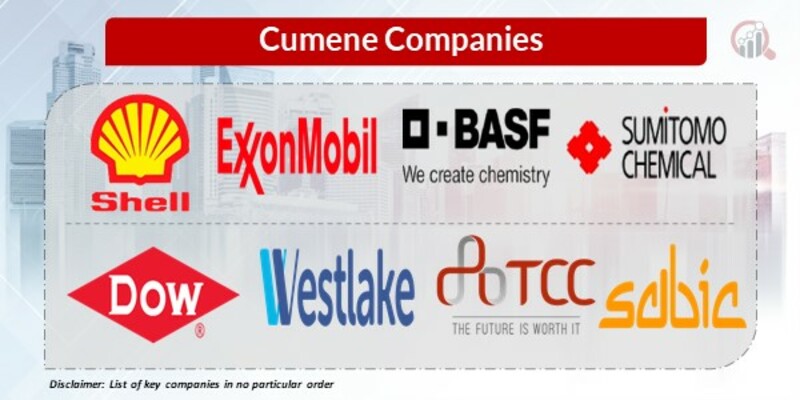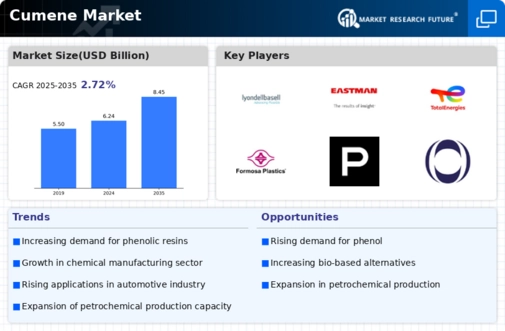Top Industry Leaders in the Cumene Market
 The cumene market, a key player in the petrochemical industry, boasts a steady growth trajectory, fueled by its diverse applications in phenol and acetone production. However, navigating this competitive landscape requires understanding the strategies adopted by major players, factors influencing market share, industry news, and recent developments.
The cumene market, a key player in the petrochemical industry, boasts a steady growth trajectory, fueled by its diverse applications in phenol and acetone production. However, navigating this competitive landscape requires understanding the strategies adopted by major players, factors influencing market share, industry news, and recent developments.
Strategies Adopted by Major Players:
-
Innovation and Diversification: Leading players like ExxonMobil and INEOS are constantly innovating in cumene production processes to optimize efficiency and reduce environmental impact. Additionally, they are diversifying their product portfolios by investing in downstream applications like epoxy resins and polycarbonates.
-
Geographical Expansion: Emerging markets like China and India are witnessing a surge in demand for cumene, prompting established players to expand their production capacities in these regions. This expansion involves strategic partnerships with local companies and investments in new production facilities.
-
Vertical Integration: Integrating upstream and downstream operations is a key strategy for companies like Dow Chemical and SABIC. This ensures a steady supply of raw materials and increases control over the entire value chain, ultimately leading to cost optimization and improved profit margins.
-
Sustainability Initiatives: As environmental concerns escalate, companies are increasingly adopting sustainable practices in cumene production. This includes using renewable energy sources, reducing emissions, and developing bio-based alternatives.
Factors Influencing Market Share:
-
Production Capacity and Efficiency: Companies with larger production capacities and efficient processes have a significant advantage in terms of cost competitiveness and market share.
-
Geographical Presence: Strong presence in key consuming regions like Asia-Pacific and Europe provides access to a larger customer base and higher growth potential.
-
Product Quality and Reliability: Consistent delivery of high-quality cumene is crucial for building trust with customers and securing long-term contracts.
-
Technological Advancements: Companies investing in R&D and adopting innovative technologies gain a competitive edge by improving production efficiency and developing new applications for cumene.
Key Players
- Royal Dutch Shell Plc. (Netherlands),
- Exxon Mobil Corporation (U.S.),
- BASF SE (Germany),
- Sumitomo Chemical Co. Ltd (Japan),
- The Dow Chemical Company (U.S.)
- Westlake Chemical Corporation (U.S.),
- Taiwan Cement Corp. (Taiwan),
- Braskem (Brazil),
- China Petrochemical Corporation (China),
- and SABIC (Saudi Arabia).
Recent Developments :
August 2023: ExxonMobil announces plans to expand its cumene production capacity in China by 20%, aiming to capitalize on the growing demand in the region.
October 2023: INEOS partners with a Chinese company to build a new cumene production facility in eastern China, further strengthening its presence in the Asian market.
November 2023: Dow Chemical successfully develops a bio-based cumene production process using renewable feedstocks, marking a significant step towards a more sustainable future for the industry.
December 2023: The European Union announces stricter regulations on the use of benzene, a precursor to cumene, potentially impacting the production costs and profitability of cumene manufacturers in the region.









